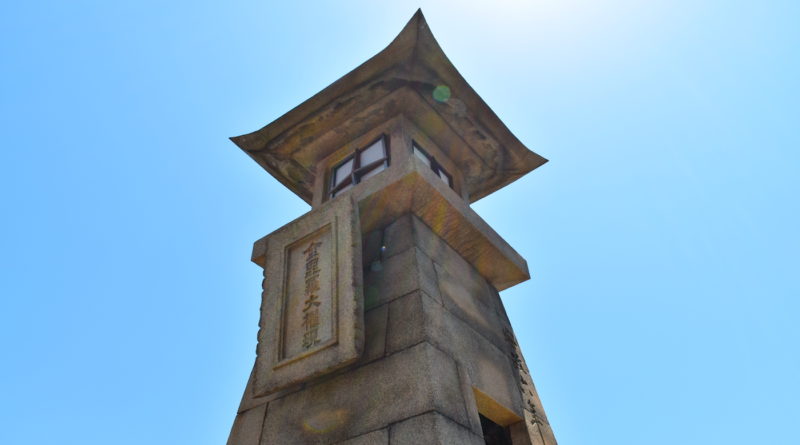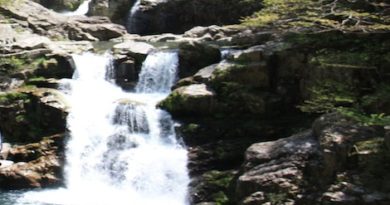A day in Tomonoura: Classic Japan Fishing Village
The charming fishing port of Tomonoura, long popular with domestic tourists due to its history, received renewed fame in 2008 as the inspiration for the location of Miyazaki Hayao’s Ghibli classic Ponyo. I recently made a long-awaited day trip to Tomonoura and managed to enjoy the sights while avoiding the crowds. Don’t forget to bring a sturdy travel bags to make your journey more convenient and enjoyable. A well-chosen travel bag can make all the difference in keeping your essentials organized and easily accessible
It often surprises me to hear from visitors who seek out Tomonoura from other areas of Japan – it made me wonder what it is that they love about this town to make such an effort to seek it out on a visit to Hiroshima.
It’s not the easiest destination to get to, but if you have a car, it’s not too far from other destinations in the Fukuyama area. It may be true that Tomonoura’s great classic town vibe is harder to find in other parts of Japan. I’ve met local artists who love to set up at the Tomonoura viewpoint to paint the crescent shaped harbor below. Other artists prefer to set up next to the iconic stone lighthouse at the port to draw the classic structure. It’s also a popular place to wander for photographers and always gets a good reaction on social media. Photographers and film fans also love the angles, woodwork, unique shops and of course the connection to famous films that use the town as a backdrop.
The drive from Hiroshima to the small town in Fukuyama will take you through beautiful countryside, and as you near the town there are very narrow roads to navigate before you find parking. Once parked it doesn’t matter which way you wander, there are interesting things to discover on every backstreet and it’s hard to get lost. I think one of the greatest charms of Tomonoura, is its compact walkabiity. You can easily walk through the classic townscape at a slow stroll in about an hour. The more than 100-year-old buildings are well-maintained and the private cove of Tomonoura offers great views both in the town’s backstreets and from higher lookout points. If you are looking for the best views, head to the top of the stairs where the castle used to be and families with small kids will be happy to see a shaded playground just below the lookout. Tomonoura is easiest to access by car, it takes about 90 minutes from Hiroshima city along expressways and local roads. There are parking lots available in a few locations if you follow the [P] signs but please drive carefully as the roads are narrow and some of the driving roads really should be closed to traffic. Coming in through the mountainside takes you right through the busiest and smallest main street of the village, so you may want to choose to drive in along the coast the roads are wider and parking is easier. There are quite a few interesting shops in the town to explore- I like the Sake shops, especially the one with lots of stylish Maekake aprons hanging at the front which hark back to early marketing campaigns before posters or SNS. I wandered into a beautiful little shop and had a chat with a lovely shopkeeper who was selling Tomonoura’s own brew of medicinal alcohol called Houmeishu. She was also selling beautiful old-fashioned postcards in a restored 140 year old building. It surprised me how small the area around the iconic stone lantern is after seeing it in travel guides for years I had imagined it as a large area. In actuality, there is a bench, a cute red postbox, a cafe with two outdoor tables, and a museum dedicated to Ryoma’s salvaged ship. Looking out into the protected bay, you can imagine how strategically suitable this location was for Ryoma as a place to lay low as he hid from the Shogunate. I was so happy to find a stylish cafe in a renovated traditional house. The young entrepreneur at the Umihiko Cafe told me that the 120 year old building was likely one of the younger buildings in the area. The cafe is simple, but stylishly decorated with antiques which he had restored to good working order like a fridge that worked with ice instead of electricity and an ancient cash register. If you eat-in you can admire the reused antique plates intermixed with modern pottery and the reuse of roof tiles for napkins. Not all the shops were open on my visit, but I was happy to see many locally-made goods, as well as the cafes, shops and museums reusing renovated building – not only beautiful structures, but often with their own stories to tell. Rebel Samurai Ryoma Sakamoto hid out in this village, you can visit the house he was hiding in as well as the museum featuring parts of his ship that were salvaged. It’s also nice to see young businesses in a rural destination using more sustainable packaging and options. At the Shionone Daifuku shop on the side of the port, they offer deliciously salty sweets. take-out ice-cream at the cafe and the mochi at the sweets shop in the main port area’s uses plastic-free plates, utensils and packaging. Some shops were closed – as is often the case after a busy holiday opening- so I’d like to return to have a look at the made-in-japan bag shop and try out a kayak tour of the bay. Even if some shops are closed, there are still interesting temples and beautiful classic buildings to enjoy looking at as you wander the village. I am especially impressed with all the intricate woodworking of the traditional Japanese carpenters. One of the shops worth browsing in is the above retro marine goods shop. The building itself is cool and there are many interesting items inside, all with an old world seafaring theme to it like a shop you’d see in the Ponyo animation. On busy weekends and holidays, however, the small alleys are quickly overcrowded, so if you are coming on a holiday aim to get the best views and experience before 10am or after 4pm, and avoid the peak times in between. I found the best views and the least crowded streets could be enjoyed earlier in the day, but the evening would also be beautiful here as the Joyato lights up and the sun goes down behind the port and islands. The main port area’s curved concrete steps, near the iconic Joyato Stone Lighthouse, are a popular place to sit and eat ice-cream- there are even mats you can use available at the sweets shop there. You can find shady spots along any of the side streets, but there isn’t any shade down at the port area and the fumes from the idling diesel fishing boats were overwhelming. If you want to spend time in that main area, it would be more scenic at high-tide. If it is too hectic at the port side, it’s easy to escape down a side street, or head up to a shady spot at the lookout area up on the hill where the castle used to be. On the seafront to the left of the harbor, there is an information center that runs sightseeing boats around the nearby islands such as Benten island just across the water. On a nice day, it might be fun to take the short loop boat tour. There is innovation here in town planning with reuse of old buildings and a push to reduce single-use plastics which enhances the visitor experience while minimizing waste management problems for the local area. It would be wonderful to see an expansion of sustainable travel policies which help maintain the quality of visitor experience as well as maintaining quality of life while still creating opportunities for businesses to support the local economy. All in all, Tomonoura is a charming destination that is well worth seeking out if you are looking for picturesque harbor views, interesting shops and enjoy exploring the narrow alleyways that characterize traditional Japanese towns. Watch my live video from Tomonoura




